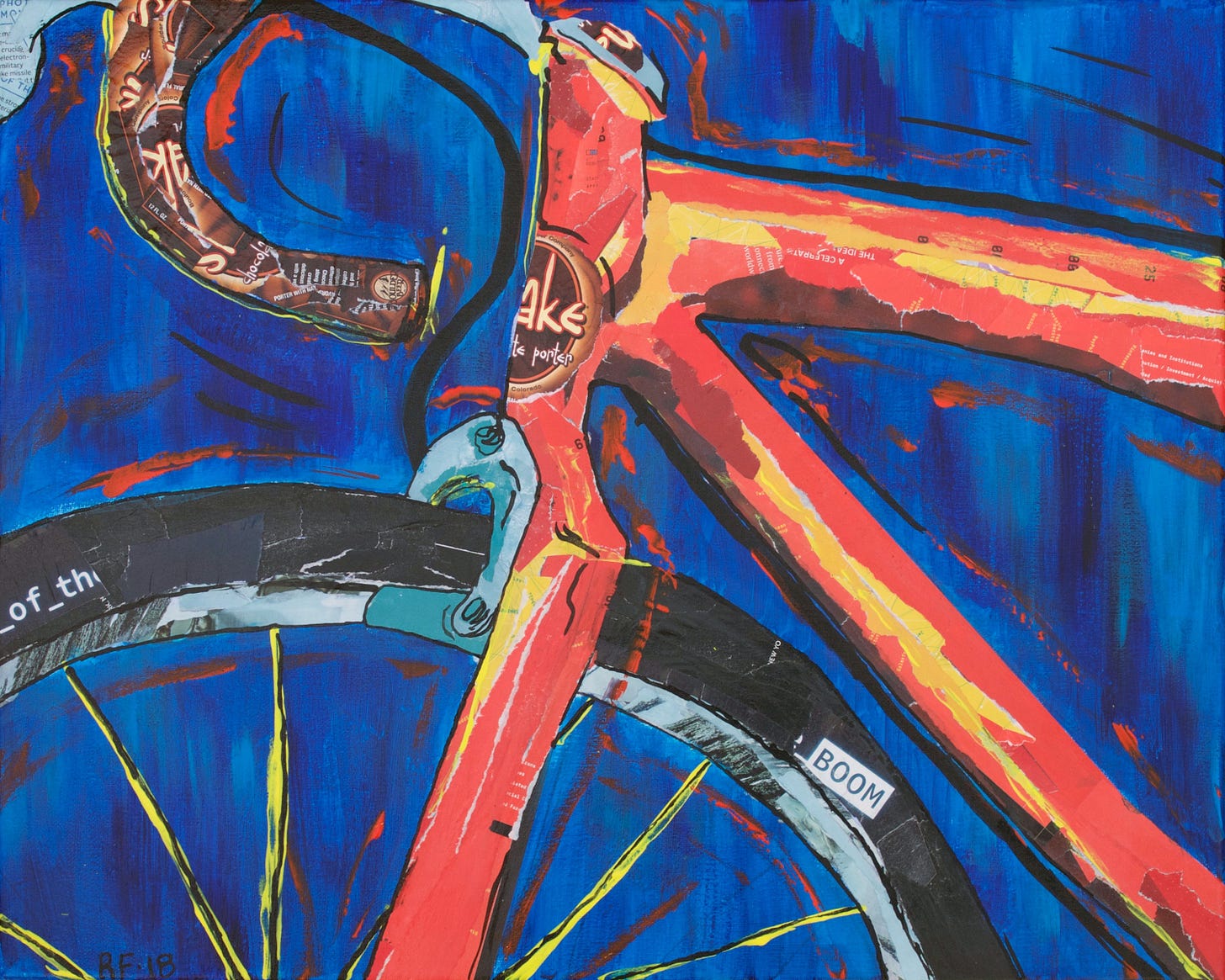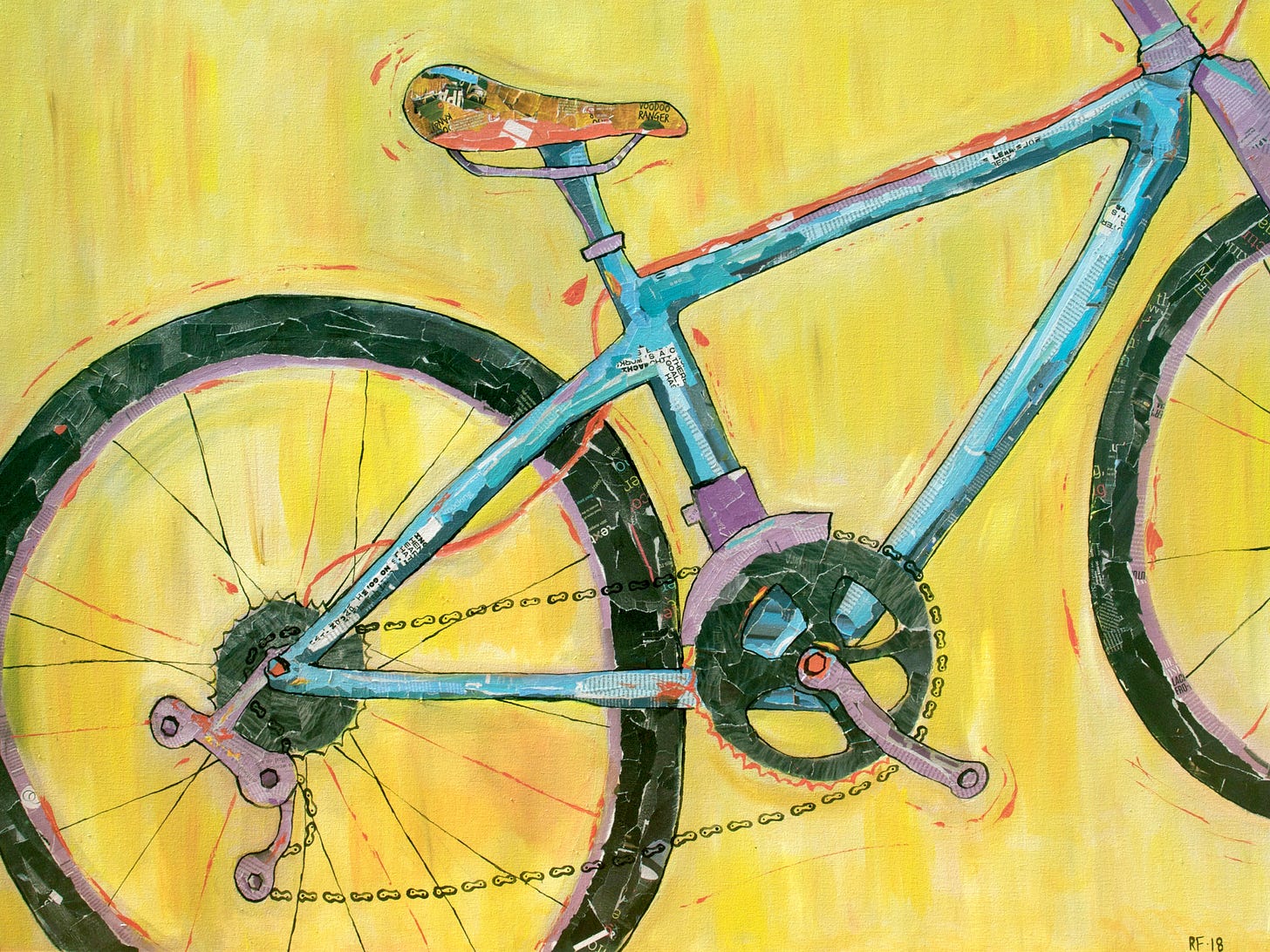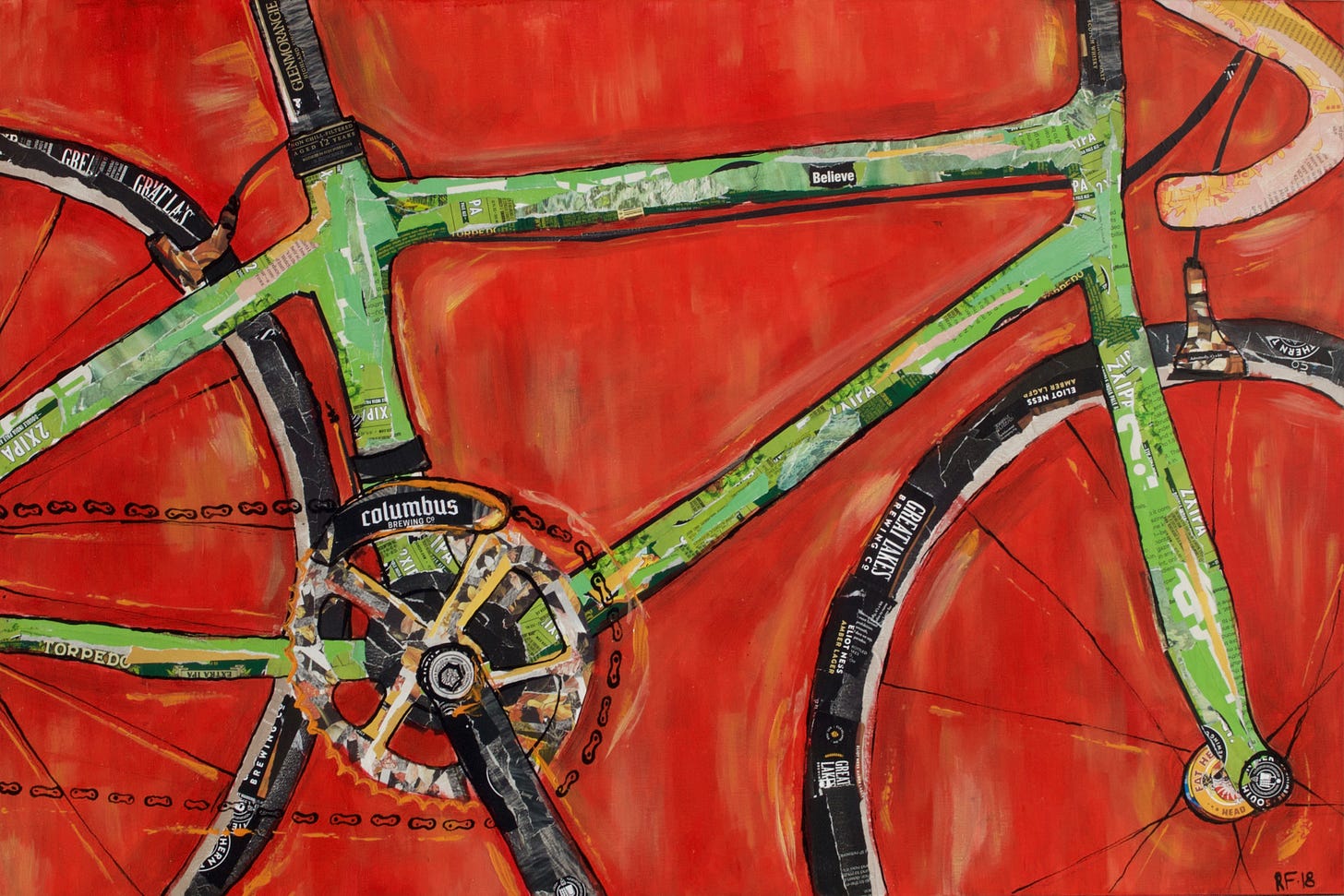Bicycles at the Intersection of Art & Physics
some thoughts on my long-running mixed medium "bicycles portraits" series.
Leonard Shlain wrote this great book called “Art & Physics: Parallel Visions in Space Time and Light.” I picked it up at a bookstore in the early days of my undergrad, shocked and intrigued to see the title, which so succinctly mirrored my own gestalt.
At the time I was struggling to get my academic institution to accept my application for dual degrees in fine art and physics. This venture was eventually rejected by the advisors in the arts programme, although it was enthusiastically accepted by the head of our physics department. Let that be an early lesson to me, that “the arts” are not nearly as open and imaginative as a young student may believe. But I digress.
Max Planck said something which I roughly remember as, “science, religion and art cannot be separated. The whole is something different from its parts.” Shlain said, similarly remembered, “art and science are the difference between being and doing.”
I will tell you now that there is an intersection in all things. Industrial designers among you may consider the tension between form and function. Synesthetes might consider their gift- that light and sound waves are matchable equations. My friend, who is fabulously good at doing both bicycles and motorcycles once said to me on a ride, “I don’t understand physics.” To which I replied, “Jimmy, you’re doing physics right now.”
If the “doing” is Plato’s Form, the “art” seeks to depict it’s Shape.
And what a thing to do, to ride a bicycle! Here in the year 2024, the actual mechanics of how bicycling works is still somewhat a mystery*. Equations for energy conversion with a bicycle are optimally 90% conserved. You’re using force, friction and momentum. What keeps it up? A gyroscope? Maybe. Caster theory? Maybe. Magick and pixie dust?
*I say “somewhat” a mystery because I find it difficult to accept the noun “mystery” in relation to a thing that I know works. A thing I do every day.
Of course, the geometry of a bicycle effects greatly its function. Things like frame shape, angle of rake, wheel size and gearing… All of these choices are both functional and aesthetic. Combining our physics and our physical specifications give us a bicycle, or at least the Form of a bicycle. But what is the Shape of it?
You don’t have to be a dog riding in a fast moving vehicle to enjoy the feeling of motion. The wind in your hair, the vibration of the road! The sound of the unseen air and feel of the unseen light on your skin! Being propelled by a bicycle is emotional too. “It’s like riding a bike,” they say. A feeling you never forget. A feeling that never lets you down when you go looking for it in the right place. I like to tell people that I love to ride my bike because when I ride I’m still 12 years old*.
*The best age.
Because mechanics and drafting are as much a part of my history as painting, it’s hardly a surprise that drawing bicycles is one of my favourite activities. I like to use materiel indicative of the texture of actually being on a bike. I like to use lines and gestures to express the motion of the parts which drive the bike. I like to make beautiful expressions of bicycles. Bicycle portraits.
In the featured images, bicycles are drafted at scale. Once drawn, I paint the ground with acrylic. The figure, bicycle parts, are then rendered in found paper collage. Finally, India ink is applied for outlines, spokes, chain and gearing edges. Bicycle portraits should show the elements of a bicycle which make it special from other bicycles. Does it have many gears to make it fast under varying conditions or only one, enabling it the greatest return on energy output? Lightweight wheels and frame for endurance or heavy frame and wide contact wheels to conquer difficult surfaces? Frame geometry for straight line speed or maneuverability? Are we going up hills or down hills? In the woods or on the road?
Because a bicycle is both a science and an art, we should also consider the Form. If the Shape is the thing in physical space, the Form is the experiential. How does it move, but also how does it move you? The literal and the metaphorical.
I do not play with the word “portrait,” here. Rather, I mean it literally- all art is a portrait of something. A landscape is a portrait of the greater world. A still life is a portrait of a bowl of fruit, resting on a table. A religious icon is a portrait of spiritual event. A portrait is a portrait of a person, a place, a thing, a feeling. A portrait is a portrait is a portrait is a portrait… an illusion of stacked mirrors extending out into eternity.






